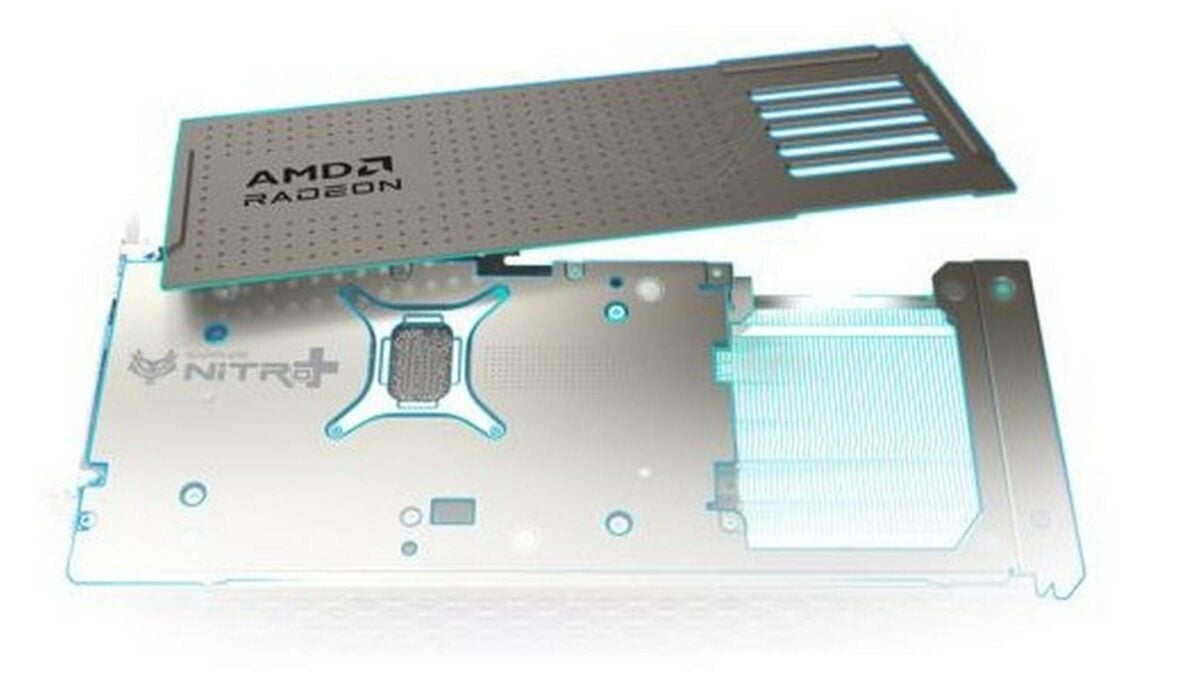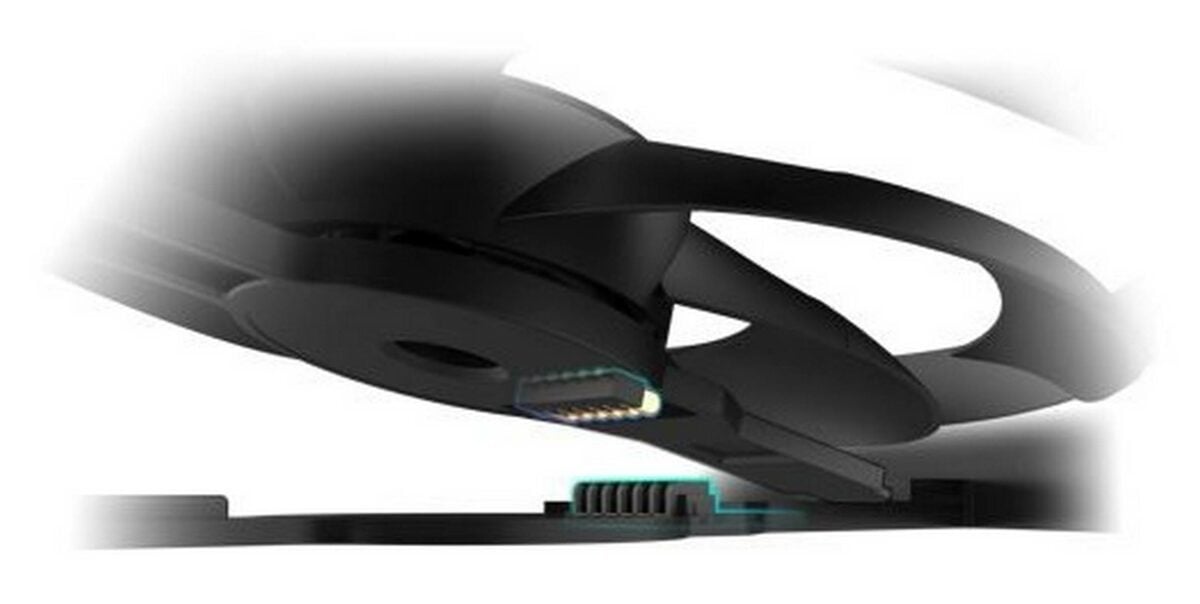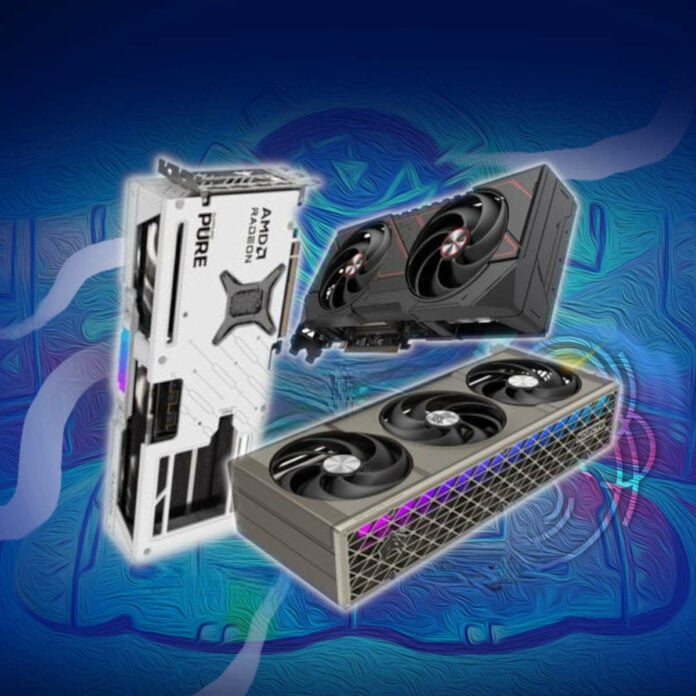Sapphire has unveiled its Radeon RX 9000 GPU roster, featuring familiar and refreshed cooler designs. In the menu, six different models take up to 3.2 slots to ensure maximum performance in all conditions. Though the cheapest versions are all you need, the premium designs will boast more user-friendly aspects, such as easily removable fans.
The brand is planning three models for each GPU, named as follows:
- Sapphire Nitro+ Radeon RX 9070 XT
- Sapphire Pure Radeon RX 9070 XT
- Sapphire Pulse Radeon RX 9070 XT
- Sapphire Nitro+ Radeon RX 9070
- Sapphire Pure Radeon RX 9070
- Sapphire Pulse Radeon RX 9070

Nitro+
Starting with the fanciest of the bunch, we have the 3.2-slot Nitro+ RX 9070 and 9070 XT cards. These high-end models feature an eye-catching yet simple design called Free Flow, made using premium materials with a focus on airflow. Even the power cable is hidden from view, routed below the optional magnetically attached backplate toward the motherboard side, which puts it right on top of the case’s cable grommets for a stealthy look.
And yes, we meant power cable in singular since the Nitro+ series has switched camps, opting for the newer 12V-2×6. But don’t bring out your pitchforks just yet. Even the faster RX 9070 XT is only rated for 304W, meaning there is plenty of headroom from the cable’s maximum 600W rating. Though if you still feel uneasy, you can always go for Pure or Pulse models which carry the good old eight-pin.



On the subject of power, these cards boast 16 phases sitting on top of a 12-layer 2oz PCB, ensuring the GPU and memory are well-fed while maintaining high and stable connections. Another exclusive aspect of the Nitro+ series is the inclusion of pin-contact fans which are easier to remove for cleaning. Lastly, there is some RGB lighting that shines through the side grills if you’d like even more flare.

Pure
The Pure series is a step below Nitro+, targeting those rocking a white build. Here you will find another triple-fan affair but taking less space at 3-slot wide. Once more, we find a flow-through area behind the third fan, but the dual 8-pin power connectors are located in their usual spot. Less fancy, no doubt, but also widely compatible with existing hardware and cases.
Unsurprisingly, the GPU power delivery system has been reduced to 14 phases, but the PCB retains its 12 layers and fuse protection. We also appreciate Sapphire’s use of large coolers on both GPUs, opening the way for some overclocking. Though, the clean white style is likely the point many users will buy it for.

Pulse
Potentially the cheapest out of the bunch, the Pulse series is a great option for those who care first and foremost about price/performance. Centred around a 3-slot triple-fan cooler on RX 9070 XT and a smaller 2.5-slot dual-fan on RX 9070, this series is all you need to experience RDNA 4 performance. This is the range I’d chose when I upgrade to my RX 7900 XT due to its great price and adequate cooling.
Again, the power delivery system has been further reduced to 12 phases – fed through two eight-pin connectors, but the PCB retains its 12 layers. To put it simply, if you don’t care about factory overclocking or fancy RGB and larger coolers, you can save yourself a buck and go with a Pulse model. Depending on final pricing, you may even be able to grab an RX 9070 XT Pulse instead of an RX 9070 Nitro+.
Specs
Regarding specs, all RX 9070 XT models will pack 4,096 Streaming Processors plus 16GB of 20Gb/s GDDR6 memory, with the RX 9070 lineup housing 3,584 Streaming Processors alongside 16GB of 20Gbps GDDR6 VRAM. The main difference between the Pulse, Pure, and Nitro+ models is the GPU frequencies.
| Pulse | Pure | Nitro+ | |
|---|---|---|---|
| Game clock | Pulse | Pure | Nitro+ |
| RX 9070 XT | 2,400MHz | 2,460MHz | 2,520MHz |
| RX 9070 | 2,070MHz | 2,210MHz | 2,210MHz |
| Pulse | Pure | Nitro+ | |
|---|---|---|---|
| RX 9070 XT | 2,970MHz | 3,010MHz | 3,060MHz |
| RX 9070 | 2,520MHz | 2,700MHz | 2,700MHz |
Lastly, all models come bundled with an L-shaped support bracket, handy if you want to give your card more rigidity to carry those massive coolers. I can confirm first-hand that this support bracket is quite sturdy. In fact, I prefer it to other solutions despite its more complicated installation procedure compared to pilar-style holders. It may take longer to put in place, but after that, it won’t budge.
Though Sapphire hasn’t shared any pricing yet, we can expect the Pulse to retail around MSRP. Pure and especially Nitro+ are likely to ask for a premium due to their extra features. That said, you can’t go wrong with either.

